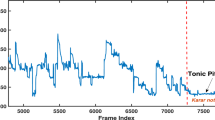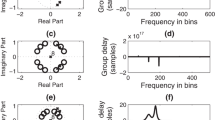Abstract
In this paper, a comparison of different algorithms for concert pitch (i.e., tuning frequency or reference frequency) estimation is presented and discussed. The unavailability of ground-truth datasets makes this evaluation on real music recordings less trivial than it may initially appear. Hence, in this paper we use two datasets, one of real music (covers80 provided by LabROSA) and one of synthesized music (MS2012, constructed by the authors). The algorithms have been compared in terms of speed of convergence and stability of the estimated value over an increasing length of the analysed signal. A local tuning frequency estimation was also performed in order to compare the ability of the algorithms to follow the local variations of the reference frequency in a real-time environment. Moreover, an analysis of the execution time have been provided. While the various algorithms perform comparably in terms of asymptotic precision, they show a quite different behaviour in terms of speed of convergence and local tuning frequency estimation accuracy.










Similar content being viewed by others
References
Amatriain X, Bonada J, Loscos A, Serra X (2002) DAFX-digital audio effects. In: Z˙olzer U (ed) Spectral processing. Wiley, Chichester, pp 373–438
Degani A (2012) The ‘ms2012’ symbolic music dataset. http://www.ing.unibs.it/alessio.degani/?p=ms2012
Dixon S (1996) A dynamic modelling approach to music recognition. In: Proceedings of the international computer music conference, (ICMC), pp 83–86
Dixon S, Tidhar D, Benetos E (2011) The temperament police: the truth, the ground truth, and nothing but the truth. In: Proceedings of the 12th international conference on music information retrieval, (ISMIR)
Dressler K (2006) Sinusoidal extraction using an efficient implementation of a multi-resolution fft. In: Proceedings of the 9th international conference on digital audio effects, (DAFX)
Dressler K, Streich S (2007) Tuning frequency estimation using circular statistics. In: Proceeding of the 8th international conference on music information retrieval, (ISMIR), pp 357–360
Ellis DPW (2007) The ‘covers80’ cover song data set. http://labrosa.ee.columbia.edu/projects/coversongs/covers80/
Gnann V, Kitza M, Becker J, Spiertz M (2011) Least-squares local tuning frequency estimation for choir music. In: Proceedings of the 131st AES convention
Gómez E (2006) Tonal description of music audio signals. Ph.D. thesis, Universitat Pompeu Fabra, Barcelona
Harte C, Sandler M (2005) Automatic chord identification using a quantised chromagram. In: Proceedings of the 118th AES convention, pp 66–71
ISO (1975) Acoustics - standard tuning frequency (standard musica pitch) ISO 16(1975)
Khadkevich M, Omologo M (2009) Phase-change based tuning for automatic chord recognition. In: Proceedings of the 12th international conference on digital audio effects, (DAFx)
Lee CT, Yang YH, Chen HH (2012) Multipitch estimation of piano music by exemplar-based sparse representation. IEEE Trans Multimed 14(2):608–618
Lerch A (2006) On the requirement of automatic tuning frequency estimation. In: Proceedings of the 7th international conference on music information retrieval, (ISMIR), pp 212–215
Mauch M, Dixon S (2010) Simultaneous estimation of chords and musical context from audio. IEEE Trans Audio Speech Lang Process 18(6):1280–1289
Peeters G (2006) Chroma-based estimation of musical key from audio-signal analysis. In: Proceedings of the 7th international conference on music information retrieval, (ISMIR)
Peeters G (2006) Musical key estimation of audio signal based on hidden markov modeling of chroma vectors. In: Proceedings of the 9th international conference on digital audio effects, (DAFx), pp 127–131
Ryynänen M (2004) Probabilistic modelling of note events in the transcription of monophonic melodies. Master’s thesis, Tampere University of Technology
Serra X (1997) Musical sound modeling with sinusoids plus noise. In: Roads C, Pope ST, Piccialli A, De Poli G (eds) Musical signal processing, chap. Musical sound modeling with sinusoids plus noise. Swets & Zeitlinger Publishers, Netherlands, pp 91–122
Vincent E, Bertin N, Badeau R (2008) Harmonic and inharmonic nonnegative matrix factorization for polyphonic pitch transcription. In: Proceedings of IEEE international conference on acoustics, speech and signal processing (ICASSP), pp 109–112
Zhu Y, Kankanhalli MS, Gao S (2005) Music key detection for musical audio. In: Proceedings of the 11th international conference on multimedia modelling, (MMM), pp 30–37
Zwicker E (2006) Psychoacoustics: facts and models. Springer-Verlag, Berlin, Heidelberg
Author information
Authors and Affiliations
Corresponding author
Rights and permissions
About this article
Cite this article
Degani, A., Dalai, M., Leonardi, R. et al. Comparison of tuning frequency estimation methods. Multimed Tools Appl 74, 5917–5934 (2015). https://doi.org/10.1007/s11042-014-1897-2
Published:
Issue Date:
DOI: https://doi.org/10.1007/s11042-014-1897-2




